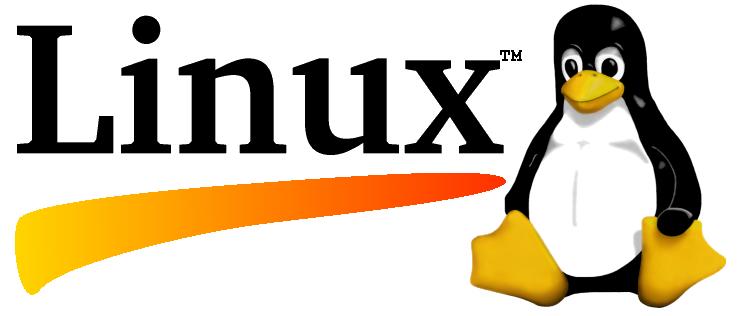Kiến Thức Tin Học
Toàn bộ câu lệnh trong Linux

Toàn bộ câu lệnh sử dụng trong Server Linux từ A – Z
Linux Commands Line A – Z
| A Command | Description |
| # alias hh=’history’ | set an alias for a command – hh = history |
| # apropos …keyword | display a list of commands that pertain to keywords of a program , useful when you know what your program does, but you don’t know the name of the command |
| # apt-cache search [package] | returns list of packages which corresponds string “searched-packages” |
| # apt-cdrom install [package] | install / upgrade a deb package from cdrom |
| # apt-get install [package] | install / upgrade a deb package |
| # apt-get update | update the package list |
| # apt-get upgrade | upgrade all of the installed packages |
| # apt-get remove [package] | remove a deb package from system |
| # apt-get check | verify correct resolution of dependencies |
| # apt-get clean | clean up cache from packages downloaded |
| # arch | show architecture of machine(1) |
| # cat example.txt | awk ‘NR%2==1’ | remove all even lines from example.txt |
| # echo a b c | awk ‘{print $1}’ | view the first column of a line |
| # echo a b c | awk ‘{print $1,$3}’ | view the first and third column of a line |
| B Command | Description |
| # badblocks -v /dev/hda1 | check bad blocks on disk hda1 |
| # bunzip2 file1.bz2 | decompress a file called ‘file1.bz2’ |
| # bzip2 file1 | compress a file called ‘file1’ |
| # find /var/log -name ‘*.log’ | tar cv –files-from=- | bzip2 > log.tar.bz2 | find all files with ‘.log’ extention and make an bzip archive |
| C Command | Description |
| # cal 2007 | show the timetable of 2007 |
| # cat /proc/cpuinfo | show information CPU info |
| # cat /proc/interrupts | show interrupts |
| # cat /proc/meminfo | verify memory use |
| # cat /proc/swaps | show file(s) swap |
| # cat /proc/version | show version of the kernel |
| # cat /proc/net/dev | show network adpters and statistics |
| # cat /proc/mounts | show mounted file system(s) |
| # cat file1 | view the contents of a file starting from the first row |
| # cat -n file1 | number row of a file |
| # cd /home | enter to directory ‘/ home’ |
| # cd .. | go back one level |
| # cd ../.. | go back two levels |
| # cd | go to home directory |
| # cd ~user1 | go to home directory |
| # cd – | go to previous directory |
| # cd-paranoia -B | rip audio tracks from a CD to wav files |
| # cd-paranoia — | rip first three audio tracks from a CD to wav files |
| # cdrecord -v gracetime=2 dev=/dev/cdrom -eject blank=fast -force | clean a rewritable cdrom |
| # cdrecord -v dev=/dev/cdrom cd.iso | burn an ISO image |
| # gzip -dc cd_iso.gz | cdrecord dev=/dev/cdrom – | burn a compressed ISO image |
| # cdrecord –scanbus | scan bus to identify the channel scsi |
| # chage -E 2005-12-31 user1 | set deadline for user password |
| # chattr +a file1 | allows write opening of a file only append mode |
| # chattr +c file1 | allows that a file is compressed / decompressed automatically by the kernel |
| # chattr +d file1 | makes sure that the program ignores Dump the files during backup |
| # chattr +i file1 | makes it an immutable file, which can not be removed, altered, renamed or linked |
| # chattr +s file1 | allows a file to be deleted safely |
| # chattr +S file1 | makes sure that if a file is modified changes are written in synchronous mode as with sync |
| # chattr +u file1 | allows you to recover the contents of a file even if it is canceled |
| # chgrp group1 file1 | change group of files |
| # chmod ugo+rwx directory1 | set permissions reading (r), write (w) and (x) access to users owner (u) group (g) and others (o) |
| # chmod go-rwx directory1 | remove permits reading (r), write (w) and (x) access to users group (g) and others (or |
| # chmod u+s /bin/file1 | set SUID bit on a binary file – the user that running that file gets same privileges as owner |
| # chmod u-s /bin/file1 | disable SUID bit on a binary file |
| # chmod g+s /home/public | set SGID bit on a directory – similar to SUID but for directory |
| # chmod g-s /home/public | disable SGID bit on a directory |
| # chmod o+t /home/public | set STIKY bit on a directory – allows files deletion only to legitimate owners |
| # chmod o-t /home/public | disable STIKY bit on a directory |
| # chown user1 file1 | change owner of a file |
| # chown -R user1 directory1 | change user owner of a directory and all the files and directories contained inside |
| # chown user1:group1 file1 | change user and group ownership of a file |
| # chsh | change shell command |
| # chsh –list-shells | nice command to know if you have to remote into another box |
| # clock -w | save date changes on BIOS |
| # comm -1 file1 file2 | compare contents of two files by deleting only unique lines from ‘file1’ |
| # comm -2 file1 file2 | compare contents of two files by deleting only unique lines from ‘file2’ |
| # comm -3 file1 file2 | compare contents of two files by deleting only the lines that appear on both files |
| # cp file1 file2 | copying a file |
| # cp dir/* . | copy all files of a directory within the current work directory |
| # cp -a /tmp/dir1 . | copy a directory within the current work directory |
| # cp -a dir1 dir2 | copy a directory |
| # find /home/user1 -name ‘*.txt’ | xargs cp -av –target-directory=/home/backup/ –parents | find and copy all files with ‘.txt’ extention from a directory to another |
| D Command | Description |
| # date | show system date |
| # date 041217002007.00 | set date and time – MonthDayhoursMinutesYear.Seconds |
| # dd bs=1M if=/dev/hda | gzip | ssh user@ip_addr ‘dd of=hda.gz’ | make a backup of a local hard disk on remote host via ssh |
| # dd if=/dev/sda of=/tmp/file1 | backup content of the harddrive to a file |
| # dd if=/dev/hda of=/dev/fd0 bs=512 count=1 | make a copy of MBR (Master Boot Record) to floppy |
| # dd if=/dev/fd0 of=/dev/hda bs=512 count=1 | restore MBR from backup copy saved to floppy |
| # df -h | show list of partitions mounted |
| # dhclient eth0 | active interface ‘eth0’ in dhcp mode |
| # diff file1 file2 | find differences between two files |
| # dmidecode -q | show hardware system components – (SMBIOS / DMI) |
| # dos2unix filedos.txt fileunix.txt | convert a text file format from MSDOS to UNIX |
| # dosfsck /dev/hda1 | repair / check integrity of dos filesystems on disk hda1 |
| # dpkg-query -W -f=’${Installed-Size;10}t${Package}n’ | sort -k1,1n | show the used space by installed deb packages, sorting by size (debian, ubuntu and alike) |
| # dpkg -i [package.deb] | install / upgrade a deb package |
| # dpkg -r [package] | remove a deb package from the system |
| # dpkg -l | show all deb packages installed on the system |
| # dpkg -l | grep httpd | show all deb packages with the name “httpd” |
| # dpkg -s [package] | obtain information on a specific package installed on system |
| # dpkg -L [package] | show list of files provided by a package installed on system |
| # dpkg –contents [package.deb] | show list of files provided by a package not yet installed |
| # dpkg -S /bin/ping | verify which package belongs to a given file |
| # du -sh dir1 | estimate space used by directory ‘dir1’ |
| # du -sk * | sort -rn | show size of the files and directories sorted by size |
| # dump -0aj -f /tmp/home0.bak /home | make a full backup of directory ‘/home’ |
| # dump -1aj -f /tmp/home0.bak /home | make a incremental backup of directory ‘/home’ |
| E Command | Description |
| # e2fsck /dev/hda1 | repair / check integrity of ext2 filesystem on disk hda1 |
| # e2fsck -j /dev/hda1 | repair / check integrity of ext3 filesystem on disk hda1 |
| # ethtool eth0 | show network statistics of eth0 |
| F Command | Description |
| # fdformat -n /dev/fd0 | format a floppy disk |
| # cp file file1 | outputs the mime type of the file as text |
| # find / -name file1 | search file and directory into root filesystem from ‘/’ |
| # find / -user user1 | search files and directories belonging to ‘user1’ |
| # find /home/user1 -name \*.bin | search files with ‘. bin’ extension within directory ‘/ home/user1’ |
| # find /usr/bin -type f -atime +100 | search binary files are not used in the last 100 days |
| # find /usr/bin -type f -mtime -10 | search files created or changed within 10 days |
| # find / -name *.rpm -exec chmod 755 ‘{}’ \; | search files with ‘.rpm’ extension and modify permits |
| # find / -xdev -name \*.rpm | search files with ‘.rpm’ extension ignoring removable partitions as cdrom, pen-drive, etc.… |
| # find / -perm -u+s | view all files on the system with SUID configured |
| # free -m | displays status of RAM in megabytes |
| # fsck /dev/hda1 | repair / check integrity of linux filesystem on disk hda1 |
| # fsck.ext2 /dev/hda1 | repair / check integrity of ext2 filesystem on disk hda1 |
| # fsck.ext3 /dev/hda1 | repair / check integrity of ext3 filesystem on disk hda1 |
| # fsck.vfat /dev/hda1 | repair / check integrity of fat filesystem on disk hda1 |
| # fsck.msdos /dev/hda1 | repair / check integrity of dos filesystem on disk hda1 |
| # fuser -km /mnt/hda2 | force umount when the device is busy |
| G Command | Description |
| # gpg -c file1 | encrypt a file with GNU Privacy Guard |
| # gpg file1.gpg | decrypt a file with GNU Privacy Guard |
| # grep Aug /var/log/messages | look up words “Aug” on file ‘/var/log/messages’ |
| # grep ^Aug /var/log/messages | look up words that begin with “Aug” on file ‘/var/log/messages’ |
| # grep [0-9] /var/log/messages | select from file ‘/var/log/messages’ all lines that contain numbers |
| # grep Aug -R /var/log/* | search string “Aug” at directory ‘/var/log’ and below |
| # groupadd [group] | create a new group |
| # groupdel [group] | delete a group |
| # groupmod -n moon sun | rename a group from moon to sun |
| # grpck | check correct syntax and file format of ‘/etc/group’ and groups existence |
| # gunzip file1.gz | decompress a file called ‘file1.gz’ |
| # gzip file1 | compress a file called ‘file1’ |
| # gzip -9 file1 | compress with maximum compression |
| H Command | Description |
| # hdparm -i /dev/hda | displays the characteristics of a hard-disk |
| # hdparm -tT /dev/sda | perform test reading on a hard-disk |
| # head -2 file1 | view first two lines of a file |
| # host www.example.com | lookup hostname to resolve name to ip address and viceversa |
| # hostname | show hostname of system |
| I Command | Description |
| # iconv -l | lists known encodings |
| # iconv -f fromEncoding -t toEncoding inputFile > outputFile | converting the coding of characters from one format to another |
| # find . -maxdepth 1 -name *.jpg -print -exec convert | batch resize files in the current directory and send them to a thumbnails directory (requires convert from Imagemagick) |
| # ifconfig eth0 | show configuration of an ethernet network card |
| # ifconfig eth0 192.168.1.1 netmask 255.255.255.0 | configure IP Address |
| # ifconfig eth0 promisc | configure ‘eth0’ in promiscuous mode to gather packets (sniffing) |
| # ifdown eth0 | disable an interface ‘eth0’ |
| # ifup eth0 | activate an interface ‘eth0’ |
| # init 0 | shutdown system(2) |
| # ip link show | show link status of all network interfaces |
| # iptables -t filter -L | show all chains of filtering table |
| # iptables -t nat -L | show all chains of nat table |
| # iptables -t filter -F | clear all rules from filtering table |
| # iptables -t nat -F | clear all rules from table nat |
| # iptables -t filter -X | delete any chains created by user |
| # iptables -t filter -A INPUT -p tcp –dport telnet -j ACCEPT | allow telnet connections to input |
| # iptables -t filter -A OUTPUT -p tcp –dport http -j DROP | block HTTP connections to output |
| # iptables -t filter -A FORWARD -p tcp –dport pop3 -j ACCEPT | allow POP3 connections to forward chain |
| # iptables -t filter -A INPUT -j LOG –log-prefix | Logging on input chain |
| # iptables -t nat -A POSTROUTING -o eth0 -j MASQUERADE | configure a PAT (Port Address Traslation) on eth0 masking outbound packets |
| # iptables -t nat -A PREROUTING -d 192.168.0.1 -p tcp -m tcp –dport 22 -j DNAT –to-destination 10.0.0.2:22 | redirect packets addressed to a host to another host |
| # iwconfig eth1 | show wireless networks |
| # iwlist scan | wifi scanning to display the wireless connections available |
| K Command | Description |
| # kill -9 process_id | force closure of the process and finish it |
| # kill -1 process_id | force a process to reload configuration |
| L Command | Description |
| # last reboot | show history reboot |
| # ldd /usr/bin/ssh | show shared libraries required by ssh program |
| # less file1 | similar to ‘more’ command but which allows backward movement in the file as well as forward movement |
| # ln -s file1 lnk1 | create a symbolic link to file or directory |
| # ln file1 lnk1 | create a physical link to file or directory |
| # locate \*.ps | find files with the ‘.ps’ extension – first run ‘updatedb’ command |
| # logout | leaving session |
| # ls | view files of directory |
| # ls -F | view files of directory |
| # ls -l | show details of files and directory |
| # ls -a | show hidden files |
| # ls *[0-9]* | show files and directory containing numbers |
| # ls -lSr |more | show size of the files and directories ordered by size |
| # ls -lh | show permits on files |
| # ls /tmp | pr -T5 -W$COLUMNS | divide terminal into 5 columns |
| # lsattr | show specials attributes |
| # lsmod | display kernel loaded |
| # lsof -p process_id | display a list of files opened by processes |
| # lsof /home/user1 | displays a list of open files in a given path system |
| # lspci -tv | display PCI devices |
| # lstree | show files and directories in a tree starting from root(2) |
| # lsusb -tv | show USB devices |
| M Command | Description |
| # man ping | display the on-line manual pages for example on ping command – use ‘-k’ option to find any related commands |
| # dd if=/dev/hdc | md5sum | perform an md5sum on a device, like a CD |
| # mii-tool eth0 | show link status of ‘eth0’ |
| # mkbootdisk –device /dev/fd0 `uname -r` | create a boot floppy |
| # mkdir dir1 | create a directory called ‘dir1’ |
| # mkdir dir1 dir2 | create two directories simultaneously |
| # mkdir -p /tmp/dir1/dir2 | create a directory tree |
| # mke2fs /dev/hda1 | create a filesystem type linux ext2 on hda1 partition |
| # mke2fs -j /dev/hda1 | create a filesystem type linux ext3 (journal) on hda1 partition |
| # mkfs /dev/hda1 | create a filesystem type linux on hda1 partition |
| # mkfs -t vfat 32 -F /dev/hda1 | create a FAT32 filesystem |
| # mkisofs /dev/cdrom > cd.iso | create an iso image of cdrom on disk |
| # mkisofs /dev/cdrom | gzip > cd_iso.gz | create a compressed iso image of cdrom on disk |
| # mkisofs -J -allow-leading-dots -R -V | create an iso image of a directory |
| # mkswap /dev/hda3 | create a swap filesystem |
| # mkswap /dev/hda3 | create a swap filesystem |
| # more file1 | view content of a file along |
| # mount /dev/hda2 /mnt/hda2 | mount disk called hda2 – verify existence of the directory ‘/ mnt/hda2’ |
| # mount /dev/fd0 /mnt/floppy | mount a floppy disk |
| # mount /dev/cdrom /mnt/cdrom | mount a cdrom / dvdrom |
| # mount /dev/hdc /mnt/cdrecorder | mount a cdrw / dvdrom |
| # mount /dev/hdb /mnt/cdrecorder | mount a cdrw / dvdrom |
| # mount -o loop file.iso /mnt/cdrom | mount a file or iso image |
| # mount -t vfat /dev/hda5 /mnt/hda5 | mount a Windows FAT32 file system |
| # mount /dev/sda1 /mnt/usbdisk | mount a usb pen-drive or flash-drive |
| # mount -t smbfs -o username=user,password=pass //WinClient/share /mnt/share | mount a windows network share |
| # mount -o loop cd.iso /mnt/iso | mount an ISO image |
| # mount -t smbfs -o username=user,password=pass //WinClient/share /mnt/share | mount a windows network share |
| # mv dir1 new_dir | rename / move a file or directory [man] |
| N Command | Description |
| # nbtscan ip_addr | netbios name resolution |
| # netstat -tup | show all active network connections and their PID |
| # netstat -tupl | show all network services listening on the system and their PID |
| # netstat -rn | show routing table alike “route -n” |
| # newgrp – [group] | log into a new group to change default group of newly created files |
| # nmblookup -A ip_addr | netbios name resolution |
| # nslookup www.example.com | lookup hostname to resolve name to ip address and viceversa |
| P Command | Description |
| # pacman -S name | Install package ‘name’ with dependencies |
| # pacman -R name | Delete package ‘name’ and all files of it |
| # passwd | change password |
| # passwd user1 | change a user password (only by root) |
| # paste file1 file2 | merging contents of two files for columns |
| # paste -d ‘+’ file1 file2 | merging contents of two files for columns with ‘+’ delimiter on the center |
| # ps -eafw | displays linux tasks |
| # ps -e -o pid,args –forest | displays linux tasks in a hierarchical mode |
| # pstree | Shows a tree system processes |
| # pwck | check correct syntax and file format of ‘/etc/passwd’ and users existence |
| # pwd | show the path of work directory |






